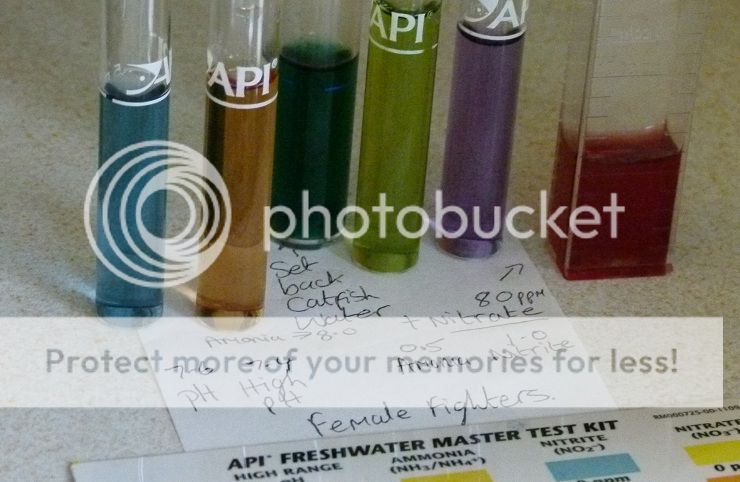As well as assisting ~heidi~ this is an interesting debate; to plop or not to plop?
From my perspective there are a number of things to consider:
- Light - I would do as eaglesaquarium has advised, as they will have been in the dark for sometime and sudden light may shock them. I actually drew the curtains and turned out all lights with only a little coming from the doorway when I got my first shipped fish.
- Temperature - I definitely believe in getting the fish up to temperature by floating the bag in the aquarium is important.
- Acclimatising - I like the link that has been provided by eaglesaquarium except for the comment in the Quote below...
- Testing - I like to test the water the fish arrives in, as this gives me a guide to them settling into my aquarium. In this respect ~heidi~ you can do this on their arrival, but you could also ask the person you are getting them from what their water parameters are currently? Of course there is a risk with the latter suggestion in that it may not be 100% accurate, with different test kits etc. Also, see further on re: plop and drop.
Lift the shipping bag from the aquarium and discard half the water from the bag
[
SOURCE]
Rather than lift the bag with risk of
a) stressing the fish
b) accidentally loosing them when tipping out water
I would use a large syringe or turkey baster to remove the water down to 50%, therefore avoiding a & b. I also use a large syringe to acclimatise my fish, as this way I can measure the amount of water I am adding each time. It is almost like in-between the two methods described in the link.
~heidi~ - do you have a quarantine tank for your new arrivals? Monday will be an exciting day for you...looking forward to the pics.
Now as for the plop and drop...
I had read somewhere that if a fish arrives in very high ammonia it can be better for the fish to be put into the new water ASAP, once of course the temperature has reached the right point. I have not done this myself and am therefore interested in people's experiences.
TwoTankAmin, please could you share more about your experience in this method i.e. what fish have you done this with?, how many times?, has it always been successful?, do you still use other methods at times as well?
In my experience I once received three Corys with some Bettas. The Bettas (females mainly) were individually bagged (which I also request now from the LFS, due to a bad experience of three females in one bag from an LFS), yet the three Corys were in one bag. One of the Corys did not look too good in the bag and when I eventually opened it the smell was horrendous. I took a syringe of their water for testing and then immediately started to add my water to the bag. I then went and did the test and this was the results:
As you can see the Corys water is marked "
set back Catfish water" and is so dark green I reckon it was off the scale, poor things! Certainly the smell took me aback.
In this instance I later found the Cory that did not look good on arrival, in the tank stuck to the filter inlet in the middle of the night. I scooped him up and put him into a holding area floating in the aquarium. He gave no resistance to me catching him, plus a well fish would not get stuck to the filter intake but swim away. Alas sadly he died. So my question to all is, would in this instance, it have been better to
plop and drop (once temperature had been reached), thereby removing the Corys from the toxic water sooner?

 /www.liveaquaria.com/PIC/article.cfm?aid=157
/www.liveaquaria.com/PIC/article.cfm?aid=157